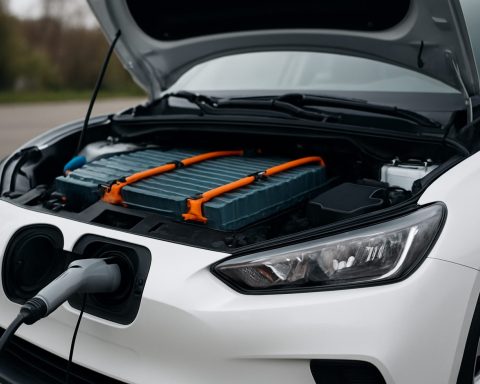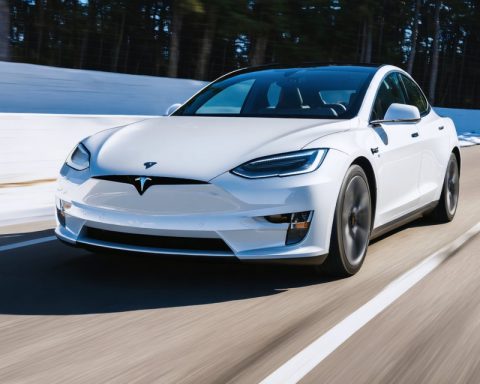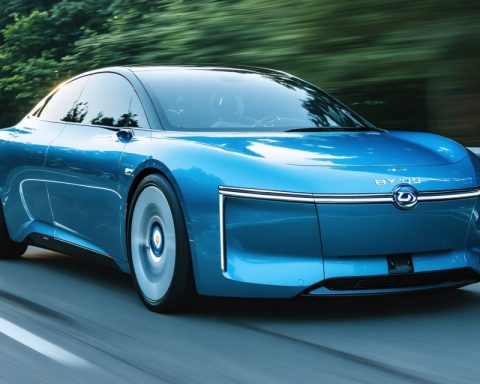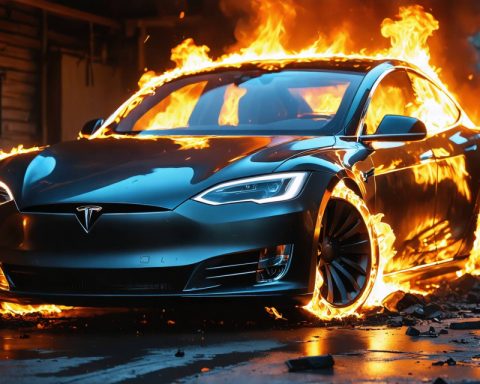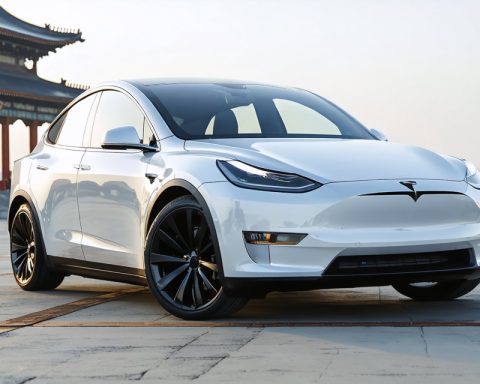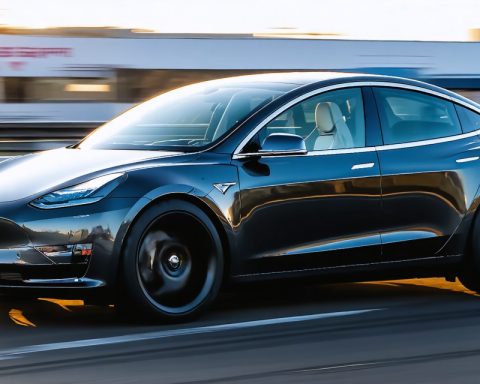- VinFast Auto Ltd., a Vietnamese electric vehicle (EV) manufacturer, is expanding globally with plans to double EV deliveries by 2025.
- VinFast’s strategy includes significantly increasing production capacity by 2028, targeting markets in Europe, Asia, the Middle East, and Africa.
- Challenges include a 25% tariff on imports from Mexico and Canada, impacting costs and the North American supply chain.
- The U.S. National Electric Vehicle Infrastructure program’s funding halt raises concerns for EV adoption rates.
- Despite obstacles, the automotive industry is on a promising growth trajectory, driven by EV and hybrid adoption and technological advancements.
- China leads in EV production and consumption, creating a benchmark for others.
- The evolving automotive market presents both risks and opportunities for investors.
- Adaptability and strategic choices are crucial for success in the shifting automotive landscape.
In the dynamic realm of the automotive industry, where economic turbulence and evolving regulations constantly reshape the landscape, VinFast Auto Ltd. (NASDAQ:VFS) is charging ahead. This Vietnamese powerhouse of electric innovation has stepped onto the global stage with audacity, delivering a striking increase in vehicle production last year and setting ambitious goals for the future.
Nestled in the heart of Hai Phong City, Vietnam’s trailblazer aims to double its delivery of electric vehicles in 2025, bolstered by a robust strategy for expansion stretching across continents. From Asia to North America, VinFast’s vision is not just about keeping up but setting the pace, planning to turbocharge its production capacity significantly by 2028. As it amplifies its reach into burgeoning markets in Europe, Asia, the Middle East, and Africa, the auto world is on alert.
However, the path isn’t devoid of hurdles. Imposing 25% tariffs on goods from neighboring Mexico and Canada loom ominously, threatening to spiral costs, strain the North American supply chain, and shake the job market in the U.S. Meanwhile, the halt in funding for the U.S. National Electric Vehicle Infrastructure program casts a shadow over the rapid adoption of EVs.
Despite these challenges, the industry drives forward with a promising trajectory, poised to reach new heights by 2025, thanks to the widespread adoption of EVs and hybrids, and the relentless march of technology in battery and autonomous vehicle innovations. The East, particularly China, continues to dominate with its unmatched production capabilities and consumer base, setting a benchmark that beckons others to follow.
In the midst of these shifting gears, investors find both peril and promise. Navigating these uncertain terrains requires deftness and vision, making the right choices in this automotive evolution potentially rewarding. As the world accelerates towards a cleaner, smarter future, those who keep pace with change, much like VinFast, may well find themselves at the forefront of the drive towards tomorrow.
Is VinFast Set to Revolutionize the Global EV Market?
How-To Steps & Life Hacks
Considering a VinFast Electric Vehicle?
1. Research Model Specifics: VinFast offers various models with differing specifications to cater to different needs. Ensure you understand each model’s range, charging capabilities, and features.
2. Evaluate Charging Options: Investigate local charging infrastructure, whether it’s home charging setups or utilizing public charging stations compatible with VinFast vehicles.
3. Explore Incentives: Check for any local government incentives or rebates for purchasing an EV, which can significantly reduce costs.
4. Assess Total Cost of Ownership: Besides purchase price, consider maintenance savings, fuel savings, and resale value.
Real-World Use Cases
VinFast’s expansion into new territories opens windows for diverse applications:
– Urban Commute: Affordable models can become popular choices for daily urban transport.
– Fleet Operators: Companies can leverage electric fleets for reduced emissions and lower operating costs.
– Rental Services: The emerging EV-friendly infrastructure globally presents opportunities for rental and car-sharing platforms.
Market Forecasts & Industry Trends
The global EV market is forecasted to grow substantially:
– The global electric vehicle market size is projected to reach approximately $800 billion by 2027, growing at a CAGR of over 21% from 2020 to 2027 (Allied Market Research).
– Increasing environmental concerns and supportive government policies are driving demand.
– Battery technology improvements continue to enhance vehicle range and reduce costs.
Reviews & Comparisons
VinFast vehicles are rising in popularity. Here’s how they compare:
– Performance: Generally competitive in acceleration and range with contemporaries such as Tesla.
– Affordability: VinFast offers models priced to compete with mid-range and luxury EVs.
– Design: Styled to appeal to both Western and Eastern sensibilities, often reviewed as aesthetically pleasing.
Controversies & Limitations
– Tariff Concerns: International tariffs can impact prices and supply chain dynamics, especially critical in North American markets.
– Infrastructure Challenges: Expansion in regions with insufficient EV infrastructure may slow adoption.
– Financing Issues: Suspended funds in the U.S. can deter infrastructure growth, critical for EV adoption.
Features, Specs & Pricing
– VinFast models often feature competitive battery ranges upwards of 300 miles on a single charge and quick acceleration times.
– Pricing starts in the mid-range segment but can scale upwards with luxury features or larger batteries.
Security & Sustainability
– VinFast employs modern cybersecurity measures to protect its vehicle network systems.
– Focus on sustainable manufacturing practices and eco-friendly materials increasingly sets VinFast apart in this sector.
Insights & Predictions
– VinFast’s broad market access and ambitious expansion align it favorably in global EV race.
– Continued innovation, especially in battery technology, can propel VinFast ahead of competitors.
Tutorials & Compatibility
– Compatibility: VinFast EVs support multiple charging standards, facilitating use in diverse geography with existing infrastructure.
– Tutorials: The company provides comprehensive guides and support for both vehicle use and maintenance.
Pros & Cons Overview
Pros:
– Innovative technology
– Competitive pricing on higher-end models
– Strong global expansion strategy
Cons:
– Dependency on evolving global trade policies
– Infrastructure development required in new markets
– Brand recognition still growing in Western markets
Conclusion: Actionable Recommendations
– Evaluate Your Driving Needs: Consider distance, charging accessibility, and financial incentives available in your area to determine if a VinFast vehicle is a right fit.
– Stay Informed on Tariffs: Keep abreast of tariff changes, as they can affect EV pricing.
– Monitor Local Infrastructure: Expansion of charging networks can enhance the practicality of EV ownership.
For more on electric vehicles, sustainability, and future trends, explore resources at the VinFast official website.





